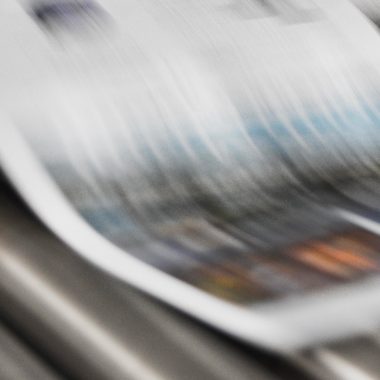Facebook’s boycott of Australian newspapers, in retaliation to a bill initiated by Scott Morrison’s government, was, in the end, short-lived. It is nevertheless symptomatic of a situation that has been tense for many years between the press publishers supported by their respective states and the technological platforms, which have become essential to press and media visibility.
A project contested by Facebook
To better understand the stakes and the possible repercussions of this crisis, it is necessary to review the course of events. The Australian government initially intended to make digital platforms pay a fee to publish news articles in order to finance the media outlets that produce the original content. A move that doesn’t seem shocking: news publishers simply get paid for their work when it is distributed and made available to platform users. Unsurprisingly, Facebook didn’t see it this way and instead, saw this as an illegitimate taxation of its activity. The social network argued that Australian media would have benefited from 5.1 billion free referrals, representing no less than AUD$407 million in 2019 alone, earning them significant visibility and audience. Facebook’s response was swift: it forbade media to publish links to press articles, to share or to consult Australian and international news content on its platform, with the exception of information concerning the Covid 19 epidemic. Nevertheless, this block prevented certain health alerts from being relayed. According to data from analytics company Chartbeat, local publishers have seen a drop in traffic from readers outside the country of about 20% ౼ proof of the significant impact.
A sensible but fragile compromise
The reality of the situation was actually very uncomfortable for Facebook. In terms of image, despite the platform’s explanations, its actions were detrimental. Notably, people started referring to the social network as “Faceblock.” We know that newspapers are weakened when Facebook makes considerable profits, and refusing the payment of this compensation sends out the image of a predatory group more concerned with its profits than with the survival of quality media. On the other hand, Google, which was also affected, had adopted a much more conciliatory approach by signing an agreement with seven press groups to ensure the development of Google News Showcase in Australia. Logically, since it was in everyone’s best interest to find a solution, Facebook and the Australian government reached a compromise: a new law extends the timeframe to reach an agreement with the press groups. The obligation to negotiate is also mitigated: if it is proven that a platform has sufficiently participated in the development of the Australian press, then a negotiation is no longer necessary. This is an important point for the social network, which thus regained some leeway and agreed, under these conditions, to restore news content on its platform.
The difficult relationship between the press and tech platforms around copyrights and broadcasting
While a compromise has been reached in Australia for the time being, the crucial issue of media remuneration by technology platforms has not yet been resolved. Admittedly, the historical position of these platforms, considering that they help publishers generate website traffic, seems to have been lost as the balance of power appears unbalanced to their advantage. Nevertheless, in the United States, and in many other national legislations, the titles, photos and extracts of press articles present on the platforms are considered “fair use” and are, as such, exempted from distribution rights insofar as the Internet user is invited to consult the site of the corresponding newspaper. But in reality, users are less and less likely to click on the website as they are often satisfied with the proposed selection of key passages and photos posted on the platform. The platform collects the advertising revenue at the expense of the newspaper title. This reality has led the European Union to modify copyright laws entitling publishers to claim compensation from the platforms for article excerpts posted on their networks. This modification was met by resistance from Google. A similar legislation is often evoked in the United States, but the situation has not yet evolved.
Giving the means to guarantee a quality independent press
The movement seems to be well and truly underway, and technology platforms are unlikely to avoid some form of increased financial participation in most countries where they operate. However, the diversity of legislation governing copyrights complicates the adoption of more uniform legislation. It is high time to recognize that technology platforms and media outlets coexist in the same journalistic content ecosystem. We can see that these fabulously wealthy and image-concerned social media giants choose to negotiate and pay publishers only when under exceeding pressure . This is true in Europe as well as recently in Australia. It remains to be seen at what level this financing will stabilize, through what mechanisms it will be provided and what it will mean for the freedom of the press. Let’s hope that public opinion will prove to be powerful enough to demand that the financial conditions necessary to the survival of independent and quality media are sustained in our democracies.
By Julien Malbreil










